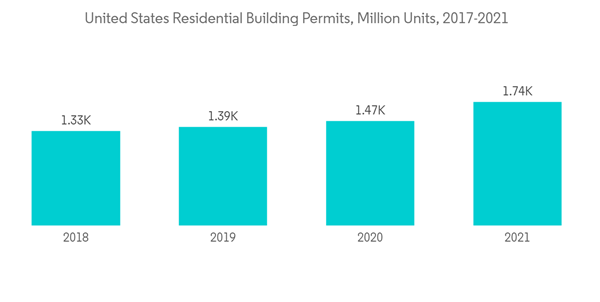Dublin, Nov. 08, 2023 (GLOBE NEWSWIRE) -- The "Niobium Market Size & Share Analysis - Growth Trends & Forecasts (2023 - 2028)" report has been added to ResearchAndMarkets.com's offering.
The niobium market is currently estimated to be at 97,208.01 tons by the end of this year, with a projected increase to 189,890.44 tons in the next five years.

This growth is expected to be driven by several key factors and trends:
- COVID-19 Impact and Recovery: The COVID-19 pandemic had a negative impact on the niobium market due to manufacturing facility shutdowns and supply chain disruptions. However, the industry witnessed a recovery in 2021, leading to increased demand.
- Increased Usage in Structural Steel: The medium-term growth of the niobium market is expected to be driven by the accelerating usage of structural steel. Niobium is used to enhance the strength of steel, making it suitable for constructing bridges, high-rise buildings, and other infrastructure projects.
- Demand for Lighter and Fuel-Efficient Vehicles: Niobium is also used in the automotive industry to produce lighter-weight and more fuel-efficient vehicles. As the automotive industry continues to focus on sustainability and efficiency, the demand for niobium is expected to increase.
- Limited Supply Sources: One of the challenges facing the niobium market is the limited supply sources. Niobium is primarily sourced from a few countries, and any disruptions in the supply chain can impact the market.
- Potential in Next-Generation Lithium-Ion Batteries: Niobium's usage in next-generation lithium-ion batteries presents an opportunity for growth in the market. As battery technology continues to evolve, niobium may play a crucial role.
- Asia-Pacific Dominance: The Asia-Pacific region, particularly countries like China, India, and Japan, dominates the niobium market. These countries have increasing consumption of niobium in various industries, including steel manufacturing and automotive.
- Construction Sector as the Largest Consumer: The construction industry is the largest consumer of niobium globally. High-strength niobium micro-alloyed plate products are used in construction, bridges, high-rise buildings, and other infrastructure projects.
- Global Construction Industry Growth: The global construction industry is expected to witness significant growth, driven by factors such as population growth, urbanization, and government investments in infrastructure development. This growth will boost the demand for niobium.
- Electric Vehicle (EV) Production: The shift toward electric vehicles (EVs) is driving the demand for niobium, as it is used in high-strength steel for EV manufacturing. China, in particular, has a significant EV market.
- Infrastructure Development Initiatives: Governments in various countries, including India and Indonesia, are focusing on infrastructure development, which includes residential and commercial construction projects. This will lead to increased niobium consumption.
- Japanese Steel Production: Japan is a major producer of crude steel and a significant end-user of niobium. Changes in Japanese steel production can impact niobium demand.
Key Topics Covered:
1 INTRODUCTION
2 RESEARCH METHODOLOGY
3 EXECUTIVE SUMMARY
4 MARKET DYNAMICS
4.1 Drivers
4.1.1 Accelerating Usage in Structural Steel
4.1.2 Growing Demand for Lighter-Weight and More Fuel-Efficient Vehicles
4.2 Restraints
4.2.1 Limited Supply Sources
4.2.2 Concerns About Health Issues on Acute Exposure
4.3 Industry Value Chain Analysis
4.4 Porter's Five Forces Analysis
4.5 Technological Snapshot/ Production Analysis
4.6 Price Analysis
5 MARKET SEGMENTATION (Market Size in Volume)
5.1 Occurrence
5.1.1 Carbonatites and Associates
5.1.2 Columbite-Tantalite
5.2 Type
5.2.1 Ferroniobium
5.2.2 Niobium Oxide
5.2.3 Niobium Metal
5.2.4 Vacuum-Grade Niobium Alloys
5.3 Application
5.3.1 Steel
5.3.2 Super Alloys
5.3.3 Superconducting Magnets and Capacitors
5.3.4 Batteries
5.3.5 Other Applications
5.4 End-user Industry
5.4.1 Construction
5.4.2 Automotive and Shipbuilding
5.4.3 Aerospace and Defense
5.4.4 Oil and Gas
5.4.5 Other End-user Industries
5.5 Geography
6 COMPETITIVE LANDSCAPE
6.1 Mergers and Acquisitions, Joint Ventures, Collaborations, and Agreements
6.2 Market Share (%)**/Ranking Analysis
6.3 Strategies Adopted by Leading Players
6.4 Company Profiles
6.4.1 Admat Inc.
6.4.2 Australian Strategic Materials Ltd
6.4.3 CBMM
6.4.4 Changsha South Tantalum Niobium Co.,Ltd
6.4.5 CMOC
6.4.6 Grandview Materials
6.4.7 Magris Performance Materials
6.4.8 NioCorp Development Ltd.
6.4.9 Titanex GmbH
7 MARKET OPPORTUNITIES AND FUTURE TRENDS
7.1 Expected Usage of Niobium in Next-Generation Lithium Ion Battery
7.2 Innovative Techniques and Mine Designing
For more information about this report visit https://www.researchandmarkets.com/r/h3tr3
About ResearchAndMarkets.com
ResearchAndMarkets.com is the world's leading source for international market research reports and market data. We provide you with the latest data on international and regional markets, key industries, the top companies, new products and the latest trends.
Attachment
